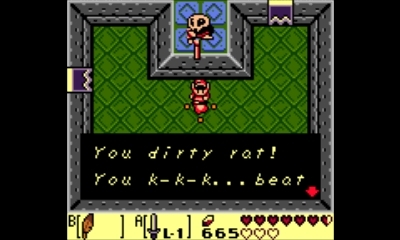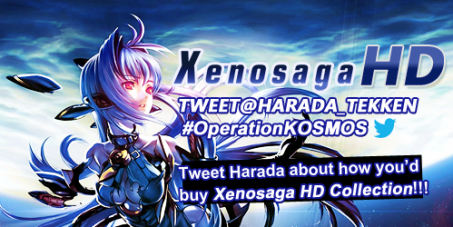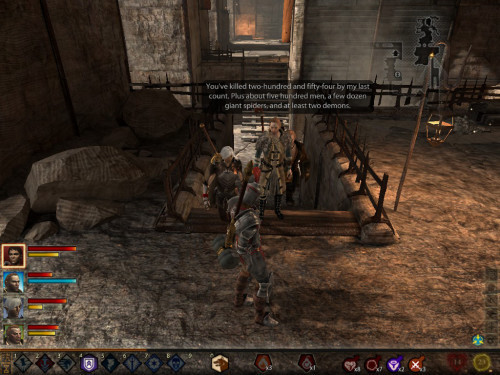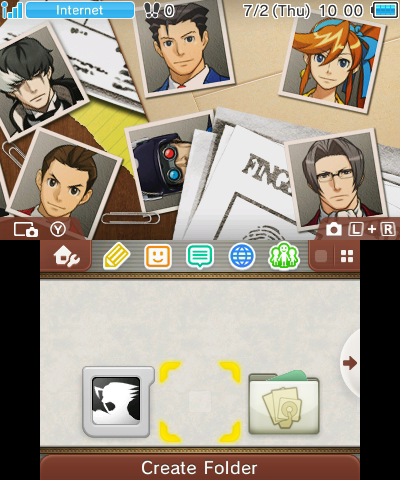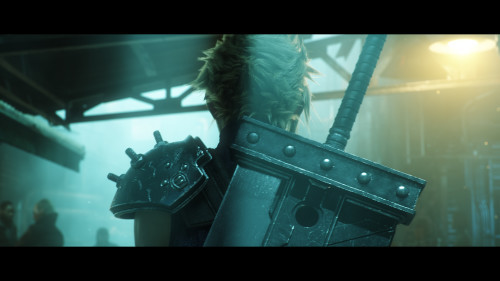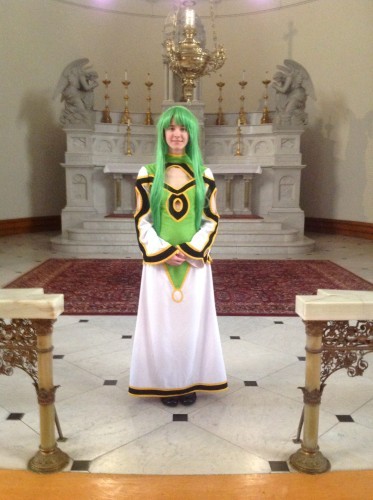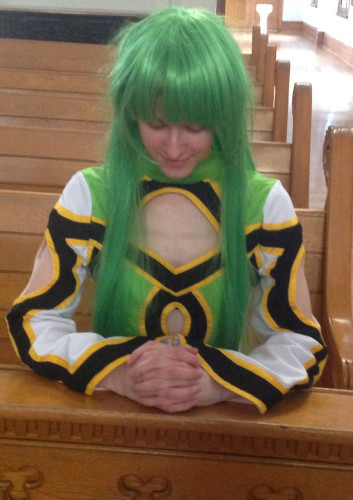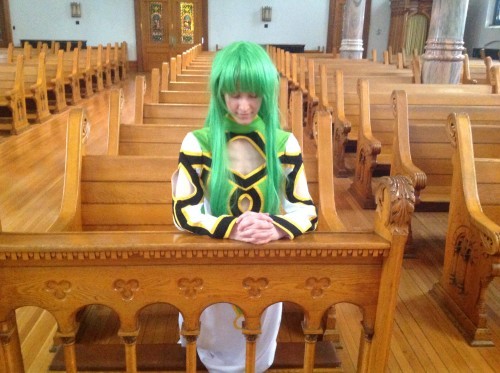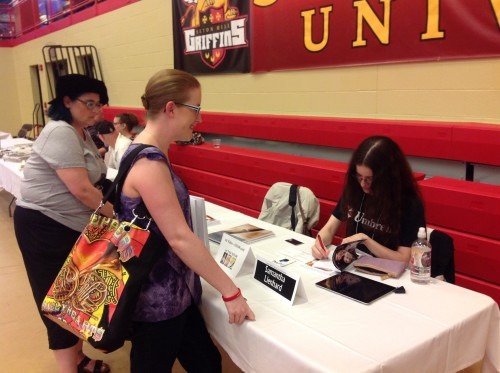Samantha Lienhard's Blog, page 164
July 17, 2015
A New Baten Kaitos Game is Possible With Fan Support
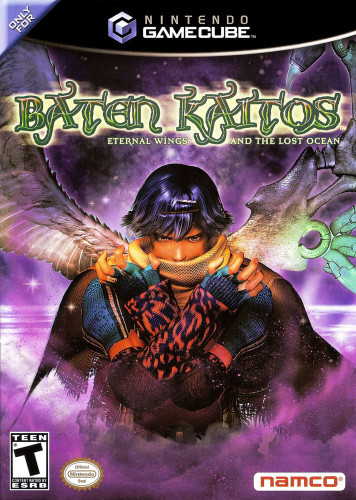 Let me start by saying I haven’t played either Baten Kaitos game yet, but I really want to. You’re probably tired of me saying that, so I promise to work hard on my video game backlog.
Let me start by saying I haven’t played either Baten Kaitos game yet, but I really want to. You’re probably tired of me saying that, so I promise to work hard on my video game backlog.
Baten Kaitos: Eternal Wings and the Lost Ocean and its prequel, Baten Kaitos Origins, are RPGs for the Gamecube. People recommended them to me in the past, but what really got my attention was the trend of people who love both Baten Kaitos and Tales of Symphonia (which also began on the Gamecube). When multiple people rank Baten Kaitos alongside my new favorite game as the best JRPGs, it gets my attention.
I really don’t know much about it. The name “Baten Kaitos” means “belly of the sea monster” and is also the traditional name used for the star Zeta Ceti. Is this significant? I have no idea. Tales of Symphonia taught me that trying to figure out plot points based on a name I recognize won’t necessarily work.
I also know the battle system involves cards. Card-based video games seem to be surging in popularity, so this can only help Baten Kaitos, right?
Meanwhile, the Baten Kaitos series found itself in the news just recently, as Siliconera discussed it with Bandai Namco producer Kensuke Tsukanaka, who said:
“As for [Baten Kaitos] itself outside of Project X Zone, well, I can’t really say much about that yet, but I think we need some substantial feedback from fans before moving forward with a project like that. What do they want to see from it? What platform do they want to see it on? If we can gather more voices for Baten Kaitos, then maybe we can start something with Bandai Namco Entertainment. That’s about all I can say right now!”
This is reminiscent of Xenosaga’s situation, as well as recent projects like Shenmue 3 that used Kickstarter as a gauge of community interest. With little surprise, fans have already started a petition.
Is there a market for a third Baten Kaitos game? If you’re interested, sign the petition and let Bandai Namco know you want a new Baten Kaitos! Tweet #BatenKaitos
Did you enjoy this post? Be sure to share it with your social networks!
The post A New Baten Kaitos Game is Possible With Fan Support appeared first on Samantha Lienhard.
July 15, 2015
Today is Amazon Prime Day!
In honor of Amazon‘s 20th anniversary, the online retailer has declared this July 15 to be Prime Day.
Promoted as featuring “more deals than Black Friday,” it’s a special one-day sale exclusive for Prime members. Not a member? Don’t worry–if you sign up for the 30-Day Free Trial, you’ll have access to the Prime Day deals!
Deals will be available across called categories, including video games. Check in throughout the day, and I’ll update this post with the best Amazon Prime Day video game deals I find, along with other relevant sales.
Amazon Prime Day Video Game Deals
Now here are some eye-catching sales! You can get a PS4 bundled with Batman: Arkham Knight and The Witcher 3: Wild Hunt for only $399.99. I’d go for it if I didn’t have Wild Hunt on the PC already, and even then I’m tempted.
Meanwhile, the price of Bloodborne has been cut to $29.99. I want Bloodborne. It has everything that makes me interested in the Souls games… with Lovecraftian horror themes!
More Amazon Prime Day Deals
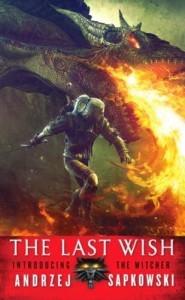 Here’s something that might interest you: some of the Witcher novels are on sale for Prime Day.
Here’s something that might interest you: some of the Witcher novels are on sale for Prime Day.
The Last Wish – My Review – Buy Now
Sword of Destiny – Pre-order Now
The Time of Contempt – My Review – Buy Now
(Note that while I never reviewed Sword of Destiny, I read the fan translation and it’s definitely worth getting. Read it between The Last Wish and Blood of Elves to get the most out of the story.)
The remaining Witcher novels don’t appear to be on sale, but they’re still excellent reads. More importantly, Blood of Elves comes before The Time of Contempt.
Blood of Elves – My Review – Buy Now
Baptism of Fire – My Review – Buy Now
Did you enjoy this post? Be sure to share it with your social networks!
The post Today is Amazon Prime Day! appeared first on Samantha Lienhard.
July 13, 2015
Remembering Satoru Iwata
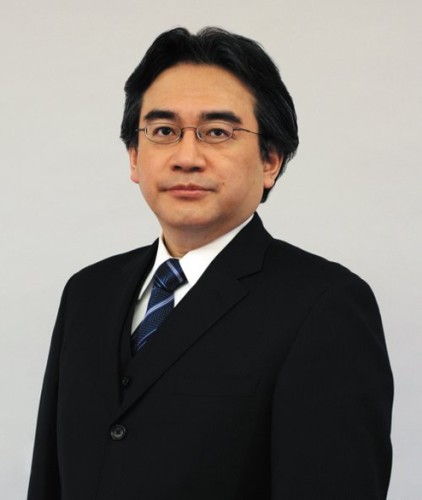 My intended post has been delayed due to the sad news that Satoru Iwata, the president and CEO of Nintendo, died on July 11.
My intended post has been delayed due to the sad news that Satoru Iwata, the president and CEO of Nintendo, died on July 11.
When I first saw the news, I thought it had to be a mistake. I knew he had some health problems, but surely it could be that bad. Then I saw Nintendo’s official statement, and I knew it was real.
Before he became president, Iwata worked as a programmer on games like EarthBound. I’m glad I had a chance to play it before his passing. He became Nintendo’s president in 2002.
Not everyone in the gaming community agreed with Iwata’s style. Many people thought he shouldn’t be president. But no matter what you thought of his business decisions, he was a key figure in the industry, a gamer just like us, and most importantly, a person. A person taken from us too soon.
Let’s all take some time to remember that person and treasure the memories he left us with.
Did you enjoy this post? Be sure to share it with your social networks!
The post Remembering Satoru Iwata appeared first on Samantha Lienhard.
July 10, 2015
Link’s Awakening: A Different Sort of Zelda Game
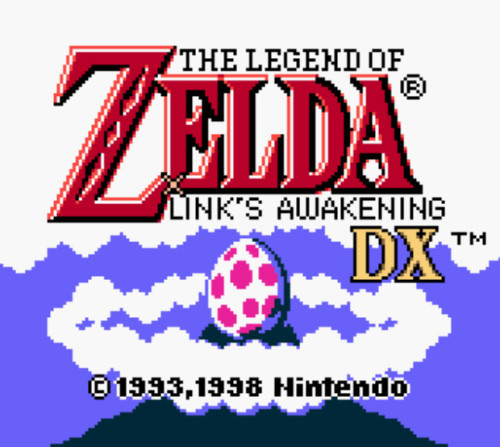 I entered the Legend of Zelda series late, with Wind Waker. It was fantastic, and I enjoyed the later Zelda games I played, but I never actually completed one of the older ones despite repeated attempts.
I entered the Legend of Zelda series late, with Wind Waker. It was fantastic, and I enjoyed the later Zelda games I played, but I never actually completed one of the older ones despite repeated attempts.
Until now.
Link’s Awakening was the fourth game released in the series. It was re-released as Link’s Awakening DX a few years later for the Game Boy Color, and that version is available on the 3DS Virtual Console. I got the Virtual Console version from Club Nintendo and decided to try it. (And that’s your best bet if you want to play it, for obvious reasons.)
Maybe there’s a reason I enjoyed this game even though I’ve never been able to finish the original Legend of Zelda or even the much-praised A Link to the Past. It didn’t feel like the other classic games. First, it’s sort of a sequel, set after Ganon’s defeat. Second, despite being The Legend of Zelda, Zelda herself isn’t in the game at all and it doesn’t feature a rescue-the-princess plot.
Third, Link’s Awakening laid groundwork for future games in the series, like Ocarina of Time. Since I like the later Zelda games, that might be why I also liked Link’s Awakening.
Fourth, it’s just strange. The inhabitants of the island setting are even quirkier than usual for the series, enemies from the Mario games appear, and it’s full of shout-outs… even to James Cagney, of all people.
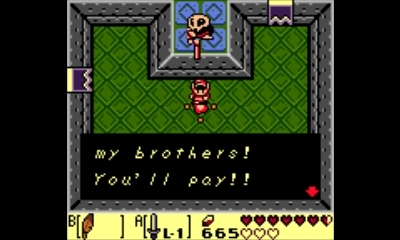
“You dirty rat! You killed my brother!” is a famous misquotation attributed to Cagney.
Even its gameplay mixes things up a little. Each piece of equipment can be set to the A or B button… including your sword and shield. They’re treated no differently than other items. While I liked to have my sword equipped regardless, I sometimes had to switch it out–for example, to use the Pegasus Boots and Roc’s Feather in combination so I could jump a large gap.
For the most part, though, it plays like you’d expect from a Zelda game. It also has the semi-linear structure I enjoy, with a clear path, optional activities, and incentive to explore and open new areas.
But perhaps what stood out to me about Link’s Awakening the most is that I’ve never felt such moral ambiguity in a Zelda game before. A Link Between Worlds sort of had ambiguity, but since it saved it all for the end of the game, it didn’t really work. Link’s Awakening, however, built it gradually to great effect.
Click for spoilersWhen I realized waking the Wind Fish would destroy the island, I started to wonder if I was really on the right side… especially since the dungeon bosses all spoke and made me feel like I was fighting people trying to save their world.
Even after the final boss’s evil rant, I’m still conflicted. Could Link’s Awakening be the one case where Link is actually the villain?
Some fans may disagree, but I don’t think of The Legend of Zelda as a plot-driven series. The games have stories, yes, but they aren’t the most compelling. This might be the first time I’ve left a Zelda game wanting to talk about its plot.
My feelings toward A Link Between Worlds were mixed, and I’m not enthusiastic about the upcoming Wii U Zelda game, but as for Link’s Awakening… I’m glad I played it.
What do you think about The Legend of Zelda: Link’s Awakening? Do you agree or disagree with my thoughts on its moral ambiguity? Let me know in the comments!
Did you enjoy this post? Be sure to share it with your social networks!
The post Link’s Awakening: A Different Sort of Zelda Game appeared first on Samantha Lienhard.
July 8, 2015
Xenosaga HD is Still Possible
Let’s talk about Xenosaga. Xenosaga is an RPG series developed by Monolith Soft and originally released for the PlayStation 2. Although six games were planned, the series was cut off after Episode III. I’ve never played any of them, but if you follow me on Twitter, you might have seen me Tweet about it in the past.
In light of all the #JRPG news, I'm still hoping to see the success of #OperationKOSMOS so I can play #Xenosaga. https://t.co/yDeixDWiDN
— Samantha Lienhard (@SamLienhard) April 20, 2015
Last September, Bandai Namco producer Katsuhiro Harada drew the attention of Xenosaga fans when he expressed his interest in creating a Xenosaga HD collection. According to Harada, Bandai Namco needs to see a large enough market for Xenosaga to justify the costs of development. He said it might be possible if “tens of thousands” of fans gathered to show their interest.
With the #OperationKOSMOS hashtag as a rallying point, enthusiastic fans started a petition to ask Harada for Xenosaga HD. Tweet #OperationKOSMOS
The petition crossed 10,000 signatures recently, but it still isn’t the “tens of thousands” Harada needs. While this is disappointing, fans of the series shouldn’t lose hope yet. Xenosaga HD is still possible, as Harada intends to “find another way.”
Most of the people hoping for Xenosaga HD are fans of the series, but there are others like me–people who never got a chance to play the original games. Xenosaga isn’t available on PSN, so my only chance is to track down PS2 copies or hope for some sort of re-release, HD or otherwise.
Remasters have become controversial, but I fully support remasters, remakes, and re-releases of old games otherwise difficult to find. It’s thanks to an HD remaster that I found my new favorite game, after all.
The petition may have failed to gather enough support, but it’s great news that Harada hasn’t given up on Xenosaga HD. Not only is he aware of what fans want, but he’s actively trying to help (which is far more support than other video game movements have from the developers). This E3 included many surprise games fans never expected to see. Maybe Xenosaga HD will be the next big announcement.
In the meantime, I still need to play Xenogears, as I mentioned earlier this year. What is your experience with the “Xeno” games? Do you think Xenosaga HD has a chance?
Did you enjoy this post? Be sure to share it with your social networks!
The post Xenosaga HD is Still Possible appeared first on Samantha Lienhard.
July 6, 2015
Dragon Age II: Show, Don’t Tell
When I started the sequel to one of the best games I played in 2013, I didn’t expect it to make me examine the “show, don’t tell” lesson of storytelling. Dragon Age 2 gets a lot of criticism, mainly for its repetitive environments and combat.
 The repeated environments bothered me not because I found them monotonous, but because they tie into a greater problem I’ll discuss in a moment. As for the combat… I honestly didn’t notice much of a difference. Maybe it’s just been too long since I played Dragon Age: Origins, but I can’t explain how the battle system changed.
The repeated environments bothered me not because I found them monotonous, but because they tie into a greater problem I’ll discuss in a moment. As for the combat… I honestly didn’t notice much of a difference. Maybe it’s just been too long since I played Dragon Age: Origins, but I can’t explain how the battle system changed.
On the other hand, I’ve heard Dragon Age 2’s story praised in spite of gameplay flaws, but the story–or rather, storytelling–is what lessened the experience for me.
That’s not a jab against BioWare’s decision to make Dragon Age 2 a frame narrative. I liked the idea that the entire game is recounted by Varric to one of the Chantry’s Seekers, Cassandra. It didn’t use the frame narrative structure to its fullest potential, as explained by one reviewer here, but in general it didn’t bother me.
I liked most of the characters. It had great party banter, which is always one of my favorite parts of games like this. My party members’ side conversations ranged from poignant to hilarious, sometimes both at the same time.
I generally wanted to know what would happen in the story, but at the most critical moments, the game just didn’t manage to make me care enough. The plot lacked cohesiveness, with only a couple threads tying the first act to the last. But its biggest problem was that, as if the writers forgot the player wasn’t a passive listener like Cassandra, it insisted upon telling things that would have been more effective if shown.
Nothing demonstrates this better than the time skips. Dragon Age II is divided into acts separated by time skips. The game spans years, but you only get to see a few select segments. Times skips are great… when they actually matter. This is why the repetitive environments bothered me. The city of Kirkwall and its surrounding lands didn’t change after the time skips. The people didn’t change. Even the party members stayed the same, with only the occasional line of dialogue about how long they’ve been friends to remind you that time has passed.

Fortunately, I knew which character I wanted to romance immediately.
That’s a related problem: the narrative knew Hawke and the party members still spent time with each other across all those years, and treated them accordingly. I, however, didn’t feel I knew them nearly as well as I knew my Dragon Age: Origins party members.Instead of talking to them on a routine basis, new interactions with your party members become available as side quests. This disjointed the experience for me. It felt less natural. Likewise, the romance felt more like I was checking off boxes rather than getting to know the character.
But the problem with Dragon Age 2’s time skips goes a lot deeper than unchanging environments or shallow character relationships. It strikes the core of the plot and the heart of the story’s “show vs. tell” problem. After one time skip, the game dropped me into an argument between the templars’ Knight-Commander and the mages’ First Enchanter and asked who I thought was right.
Imagine you walk into a room, and your friends are arguing about something that happened the previous day without you. Then they ask whose side you’re on. That’s how I felt. Hawke knew if their accusations about the events of the past few years were valid, because she actually lived through them. But me? All I had to go on was a line of narration from Varric and two people arguing. I refused to side with either and assumed the game would help me figure it out as I played more.
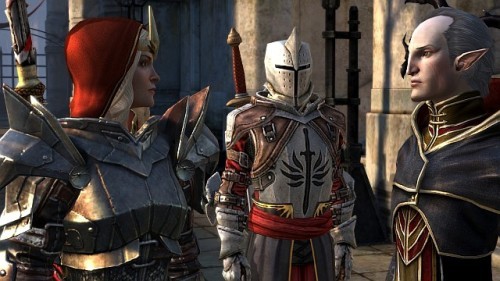
Maybe if we argue loud enough, she won’t notice the storytelling flaws.
And this is Dragon Age 2’s great mistake. It wants to tell a morally gray story, but it doesn’t balance the two sides. It repeatedly tells you why one side is wrong, through dialogue and narration. It kept telling me mages were oppressed. Why not show me? Then it tried to balance its anti-templar ranting by tossing in corrupt mages, to an almost ludicrous degree.
Why didn’t the plot take us into the Gallows to see how oppressed mages are? Why didn’t we have a Circle mage as a party member? Heck, why not have a templar party member too?
Click for spoilersIn my game, Bethany got taken to the Circle. That would have been a great chance to open a window onto the plight of mages, with built-in sympathy… except she was just fine there.
The game’s crucial moral choice was a difficult decision, not because the game portrayed such a morally gray situation but because it failed to do so. I didn’t believe the First Enchanter was right, because it didn’t show me enough from that side. I didn’t believe the Knight-Commander was right, because her reactions were irrational. The majority of the NPCs had stopped making logical sense by that point, and the game hadn’t convinced me to really care. I wanted to just turn around and leave Kirkwall’s idiocy behind me.
Of course, I couldn’t, so I picked aside and forged ahead… into an ending that made me wonder if my decision mattered at all.
It’s hard for me to pass a verdict on Dragon Age 2. I enjoyed it while I played it. I liked the characters and the idea of the plot. It had some cool moments. The general gameplay didn’t bother me.
But in the end, I found its narrative forgettable rather than compelling.
Did you enjoy this post? Be sure to share it with your social networks!
The post Dragon Age II: Show, Don’t Tell appeared first on Samantha Lienhard.
July 3, 2015
Hint of a Dual Destinies Retail Release?
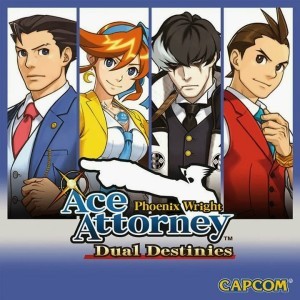
eShop only
Phoenix Wright: Ace Attorney – Dual Destinies was an amazing game. Although the gameplay was a bit too easy, the story, characters, and humor more than made up for it. One thing that disappointed many fans, however, was its digital-only status in the West.The only way to play an actual physical copy of Dual Destinies is to import the Japanese version, and due to the region-lock, you’d need a Japanese 3DS to play it on (unlike Ace Attorney Investigations 2, where you’d just need to know Japanese).
Fans begged, complained, and occasionally engaged in illogical boycotts to try to get a retail release in the West, but it didn’t work.
Probably.
Yesterday, I was thrilled to learn that the Ace Attorney 3DS themes released in Japan are now available in North America, with the European release to follow.
There are four. Two for the Phoenix Wright Trilogy, which also saw a digital-only localization, and two for Dual Destinies. They look and sound fantastic, but one oddity in the theme showcase videos stands out.
In the two videos for the Trilogy collection, you can see the icon for the Phoenix Wright Trilogy as it scrolls through. Since this is the Western version, it’s clearly for the digital game, as a square icon.
Likewise, the Dual Destinies theme videos show the icon for Dual Destinies… except it’s the cartridge-shaped icon used for a physical game inserted in the 3DS.
These videos are announcing the English release of the themes (available for $2 each, if you want them) and the interface is clearly English? So why show a version of Dual Destinies that isn’t available in English?
It could just be an oversight on Capcom’s part when making the videos. On the other hand, it could be a hint that we’ll see a Dual Destinies retail release in the West! And if that happens, maybe things bode well for the upcoming Dai Gyakuten Saiban and our much-awaited Ace Attorney Investigations 2!
Did you enjoy this post? Be sure to share it with your social networks!
The post Hint of a Dual Destinies Retail Release? appeared first on Samantha Lienhard.
July 1, 2015
Final Fantasy VII’s Combat and REmake’s Example
In the wake of the shocking Final Fantasy VII remake announcement at E3, some of the excitement has faded into worry. Director Tetsuya Nomura has made it clear that the FFVII remake won’t just be the same game with prettier graphics and voice acting, but a true remake.
Fans who really just wanted Final Fantasy VII with modern graphics started to worry then.
Since then, comments about altering the story and changing the battle system have sparked arguments and controversy across the fanbase.
Final Fantasy VII’s combat is a major source of contention. Should it be turn-based like the original or become an action RPG like Final Fantasy XV? If turn-based, should it use its normal ATB system or adopt something closer to Final Fantasy XIII’s style?
Fans can argue nonstop about these issues without reaching agreement, but two arguments against turn-based combat baffle me.
Is Turn-Based Combat Outdated?
You’ll hear this one the most. Fans of making it an ARPG claim turn-based combat was fine back when Final Fantasy VII came out, but now is an outdated, archaic system that doesn’t belong in a modern game.
This is absurd. Even if turn-based battles started because of tech limitations, they’ve since become a viable style of gameplay. I have nothing against action RPGs. Some of my favorite games are ARPGs! But I love turn-based RPGs, and acting like they’re just a primitive form of ARPG is frustrating.

ToS remade as a turn-based RPG would be just as weird.
ToS remade as a turn-based RPG would be just as weird.How would it be if Uncharted was remade as a first-person shooter, or XCOM as real-time strategy? Making FFVII an action RPG changes its genre.And if turn-based combat just doesn’t fit modern gaming, why were there multiple anticipated turn-based RPGs at E3? Why do fans love Bravely Default and its upcoming sequel? Why did Square Enix remaster Final Fantasy X for the PS3 and Vita and then again for the PS4? Why is Persona so popular?
Why is Pokemon still one of the best-selling video game franchises ever?
Turn-based RPGs have a persistent, dedicated fanbase… and many of those fans are waiting for a turn-based Final Fantasy VII remake.
But It’s a Remake!
Okay, I can at least understand how fans of action RPGs might view turn-based combat as something clunky and needlessly slow, distancing them from the battles. This other argument, however, makes no sense to me.
Perhaps due to Nomura’s statements that this is a remake rather than a remaster, some proponents of changing Final Fantasy VII’s combat claim that the battle system must change, because this is a remake.
What?
Do remakes usually change the game’s genre? This isn’t a reboot.
To people who use this argument, it seems like there are only two extremes. The Final Fantasy VII remake can be an exact clone of the original, just with superior visuals and voice acting, or it can change the core gameplay into something completely different. Nothing in between.
That’s not true at all. When I consider how the FFVII remake should be handled, I think about the 2002 remake of the original Resident Evil, affectinately known as REmake.

Recently remastered for additional consoles
REmake is a brilliant example of not only classic survival horror, but also of how a remake can surpass the original. It took everything Resident Evil did and made it better, while remaining true to the game’s heart and soul.
On the surface, it looks like Resident Evil with newer graphics and better voice acting (and less ridiculous dialogue). The S.T.A.R.S. team still goes to the mansion and encounter zombies. You still choose to play as either Jill or Chris, with different scenarios and supporting characters depending on your choice. You still solve puzzles and unlock doors in delightful old-school survival horror style. Even the opening cutscene follows the original.
When you really get into the game, however, the differences are numerous. Puzzles are slightly different. Notorious jump scares have been altered. Combat is enhanced by defense items, which help you in battle even though they’re limited (like all resources). Defeated zombies can now transform into the quick, deadly Crimson Heads if their bodies aren’t burned, which adds a new layer of strategy. The narrative is tweaked just slightly to accomodate the series’ later plot developments.
Most notable of all, perhaps, is the new area and its accompanying side story. REmake sends players to new locations and introduces Lisa Trevor, a powerful enemy with a haunting backstory.
My point is simple. Resident Evil’s 2002 remake took the original’s core gameplay, story, and premise, and improved it wherever it could. It remained a survival horror game and followed in the original’s footsteps. It “modernized” Resident Evil without abandoning its genre the way later installments tried to do. It truly remade an already-great game into something better.
The recent remaster even found a compromise for the oft-contested tank controls. A new control scheme was added in, but the option to play with tank controls also remained. Fans who considered tank controls clunky and those who considered them a key part of the tense gameplay could both be happy.
An ideal Final Fantasy VII remake will follow REmake’s example. It will keep the turn-based combat, the overworld, and the core gameplay of the original, but smooth everything out. The mini-game mechanics could use work. Maybe battles should be flashier, a la Wild Arms 3, which has party members and enemies run around the battle screen even though combat is entirely handled through menus.
Maybe the story will be adjusted to make later parts of the FFVII franchise fit (though there’s one scene in particular I really don’t want retconned to match Advent Children). Vincent and Yuffie could be better integrated into the story, or at least appear in the ending. They could also confirm or debunk that one theory once and for all.
Maybe a couple of new areas could be added, and encounters altered to surprise longtime fans.
This is what I want to see from the Final Fantasy VII more than anything else. I want a game that embraces classic turn-based RPG mechanics while also improving them, and updates the plot and gameplay while remaining wholly Final Fantasy VII at its core.
What do you want?
Did you enjoy this post? Be sure to share it with your social networks!
The post Final Fantasy VII’s Combat and REmake’s Example appeared first on Samantha Lienhard.
June 29, 2015
Martel Cosplay and Book Signing Photos
I spent the past week at Seton Hill University for my fifth Writing Popular Fiction residency. (My time as a graduate student is almost over!) The residency was fanastic, as always. I learned a lot and came back with new story ideas.
Two events I looked forward to were non-academic: the book signing I previously announced and the costume ball, both part of the alumni’s In Your Write Mind writing conference. The costume ball ties back to a promise I made earlier this year, that I’d soon try my first cosplay.
This year’s theme for the costume ball was “comics.” So of course, I decided to do a Tales of Symphonia cosplay.
…There’s a manga adaptation! It counts!
I cosplayed Martel. Since the Church of Martel was very obviously inspired by the Catholic church, I made sure to take pictures in Seton Hill’s beautiful chapel.
(Edit: I have since realized I made an embarrassing mistake with my cosplay, so some day in the future I will have more accurate photos to share!)
I commissioned the costume from Cosplay1, and I was really happy with how it turned out. The wig, I bought from Amazon, and had the bangs trimmed at a local salon.
Yes, after one standing shot as Martel, I decided some praying pictures were in order. Who exactly does Martel pray to? Now there’s another question a Symphonia prequel could answer…
The costume was a big hit at the ball (I even won a prize!), too, although I haven’t included the costume ball photos here. Overall, I really enjoyed my time as Martel, and I’ll definitely do it again sometime.
Let’s backtrack to the day before the costume ball, when I attended the In Your Write Mind book signing with three of my books. That was also a success!

I specifically chose my Resident Evil shirt for the book signing.
I completely sold out of my comedy The Accidental Zombie, which you can buy here. It seems the humorous misadventures of two NOT-mad scientists appeals to people more than my romance or horror story, although Love Under the Mistletoe earned several sales and a lot of attention (probably because of the cover).
“Rokurokubi” fared the worst, although that may be because the cover of Wicked Words Quarterly makes it less clear what sort of content is inside. If you’re interested in horror stories, such as my yokai horror story, do check it out.
In addition to the book signing itself (at which I bought books, as well, of course), the event was also a great opportunity because I got to meet Steve Saffel of Titan Books. That was really cool.
The entire residency was fantastic. I came home with stories, ideas, inspiration…
…and a long list of editing projects.
Did you enjoy this post? Be sure to share it with your social networks!
The post Martel Cosplay and Book Signing Photos appeared first on Samantha Lienhard.
June 22, 2015
Book Signing on June 26
Earlier this month, I shared a blog post I wrote for Kellan Publishing about my upcoming book signing. This Friday, June 26, I will be at the In Your Write Mind book signing at Seton Hill University in Greensburg, PA.
I’ll have copies of my three stories available in print:
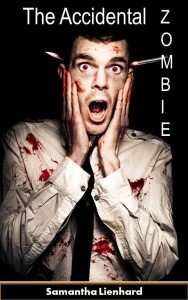 The Accidental Zombie, my comedy novella about two scientists who accidentally reanimate a corpse, and their misadventures as they try to stop their creation.
The Accidental Zombie, my comedy novella about two scientists who accidentally reanimate a corpse, and their misadventures as they try to stop their creation.
While it has horror elements due to the subject matter, it’s primarily a comedy.
Plus, if you visit this site for my video game blogging, you’ll be pleased to know The Accidental Zombie has some video game influences.

